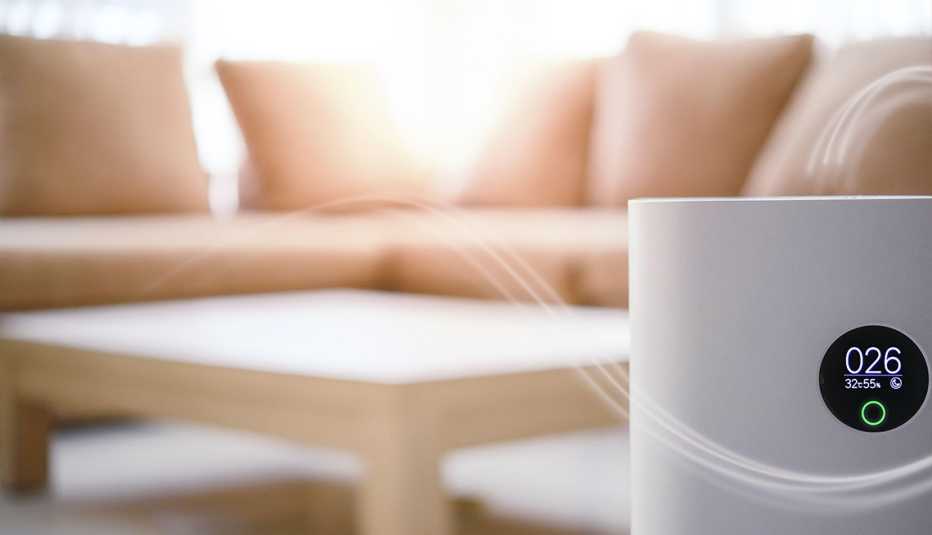Staying Fit


Home is where the heart is. Unfortunately, it’s also where the hazards are, according to the National Safety Council (NSC), which says preventable accidents injure one American every second.
Although the risk is much smaller compared with accidents, crime also is a concern, according to the safety website SafeWise, whose annual “The State of Safety in America” report summarizes the biggest safety concerns of more than 15,000 Americans. In 2021, property crime and violent crime top its list of safety concerns that keep people up at night.
Here’s the good news: Whether you’re anxious about kitchen fires, slippery floors or intruders, there are easy, affordable ways to make your home safer.


FUNDAMENTALS OF FIRE SAFETY
1. Strengthen your smoke alarm
Three out of 5 people who die in home fires live in properties without a smoke alarm, according to the National Fire Protection Association (NFPA).
Even if you have smoke alarms, you might need better ones, notes home inspector Bruce Barker, president of the American Society of Home Inspectors and of Dream Home Consultants, a building inspection firm in the Raleigh, North Carolina, area. “There are two types of smoke alarms,” he says. “Ionization smoke alarms are more common and less expensive, but don’t do a great job detecting smoky fires. Photoelectric smoke alarms do a much better job.” (NFPA recommends using both in your home, and there are combination alarms available as well.)
Even if you have smoke alarms they may still need replacing. “Smoke alarms have a limited service life,” continues Barker, who says the sensors in smoke alarms typically last only 10 years. “If you press the test button, all you might be testing is whether the horn goes off. You may not be testing the actual sensor. And if the sensor’s bad, it’s not going to work.”
While you’re swapping out smoke alarms, there are two more upgrades worth considering, according to Sharon Cooksey, fire safety educator for smoke alarm manufacturer Kidde. One is a 10-year sealed lithium battery smoke alarm, which eliminates the need to replace smoke alarm batteries — something you should do every six months with a conventional smoke alarm. The other is a strobe alarm or bed shaker.
“For those older residents who are deaf or hard-of-hearing, or who remove hearing aids to sleep, consider installing alarms with flashing lights for a greater chance of waking a sleeping person,” Cooksey says.
You also should be mindful of smoke alarm placement. Barker says corners often are “dead spots.”
“Alarms should be installed on every level of the home — including basements — in every bedroom and outside each sleeping area,” adds Cooksey, who recommends installing wireless interconnected smoke alarms. If one alarm sounds, all alarms throughout the home sound in unison.


AARP Membership— $12 for your first year when you sign up for Automatic Renewal
Get instant access to members-only products and hundreds of discounts, a free second membership, and a subscription to AARP the Magazine.
2. Get ‘smart’ about risky appliances
Electrical failures and malfunctions are responsible for 13 percent of home fires, according to NFPA.
To prevent electrical fires, consider plugging high-risk appliances such as microwaves, toasters and space heaters, into smart plugs that can monitor wall sockets for high temperatures and automatically turn devices off if they get too hot, suggests Katie McEntire, a security writer for SafeWise. You can control smart plugs remotely through your smartphone and program them to turn appliances off when they’re not in use so that you don’t accidentally leave something on while you’re sleeping or away.
“Hair straighteners and heat tools can be really good things to use with smart plugs,” McEntire says.
To reduce the risk of electrical fires, avoid plugging high-wattage appliances like space heaters into multi-plug devices, which are typically designed for lower watts. “My fire district has seen a few severe and even fatal fires from overloading electrical extension cords,” says Charles Moore, fire chief at Truckee Meadows Fire & Rescue in Reno, Nevada. “We message our citizens by stating that electric heaters be plugged directly into the wall outlet with at least 3 feet of clearance to combustibles.”
3. Store combustibles strategically
Garages, laundry rooms and basements are common places to store toxic and combustible items. But they may not be the wisest storage places, cautions retired firefighter Chuck Roydhouse, owner of Clean Sweep of Anne Arundel County, a chimney maintenance company in Millersville, Maryland, and a Chimney Safety Institute of America certified chimney sweep.
“Don’t store any gasoline or fueled-up, gasoline-powered equipment in your basement, laundry room, utility room or anywhere else in your home,” advises Roydhouse. “The vapors off-gassing are heavier than air, which means they’ll sink to a low level. And as they travel through the floor, they’ll seek an ignition source. If you have a pilot light that comes on for a gas water heater, or you get an arc or a spark created from an electric water heater, a light switch or an oil furnace as it comes on, that can ignite the vapor.”
Roydhouse suggests storing charcoal, topsoil, pool chemicals and oily rags — all of which are combustible — in airtight metal containers away from the house. The same advice applies for ashes from the fireplace and woodstove, which can ignite if they blow onto furniture inside, or onto decks and vinyl siding outside.
And take a look at that junk drawer: Even the 9-volt batteries in your junk drawer can start fires if they touch metal. NFPA suggests storing them away from common household items like paper clips, coins, pens and other batteries. And you should never throw 9-volts in the trash. Instead drop them off at your local hazardous waste collection site with other hazardous materials.






































































More AARP Smart Guides
Declutter Your Home
Unsure what to purge? Follow these simple strategies
Live a Healthier Lifestyle
22 daily tweaks good for your body and mind
Reboot Your Beauty Regime
Give maturing skin and hair the right kind of attention